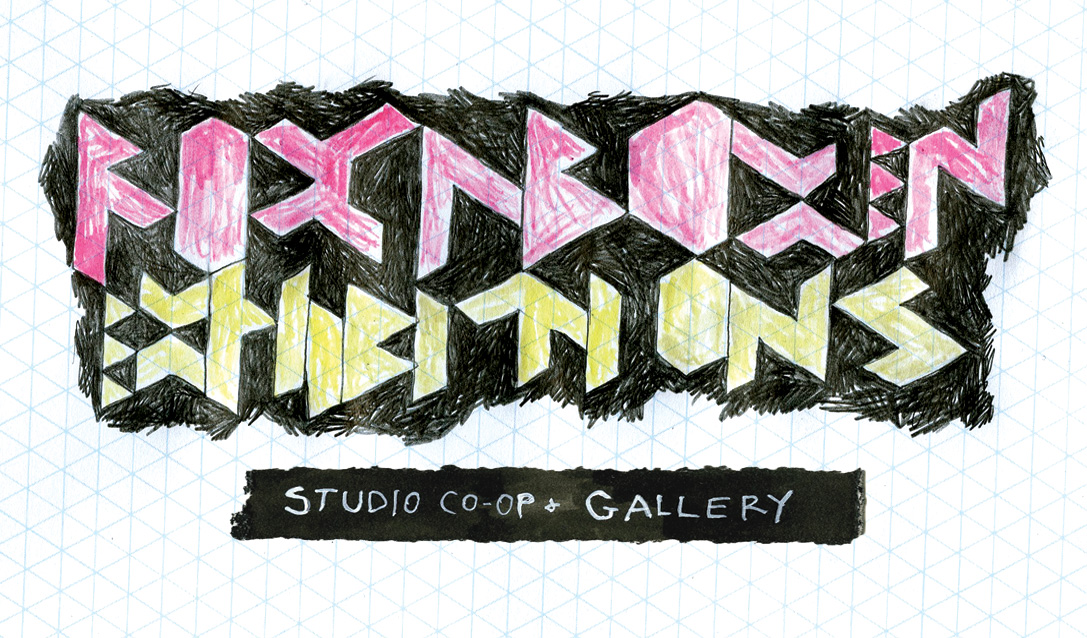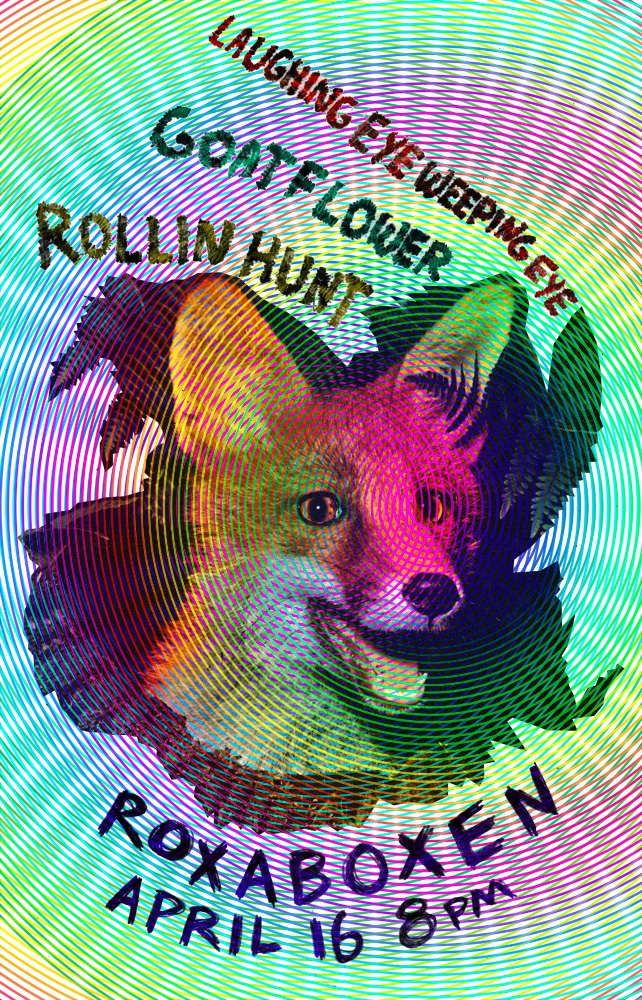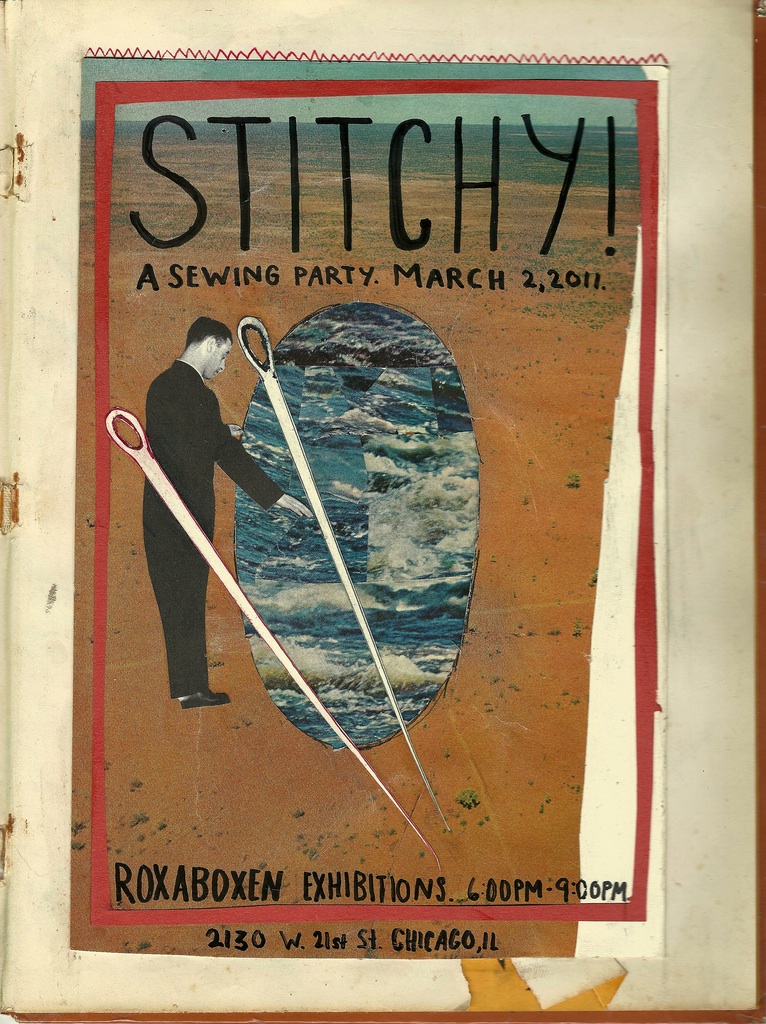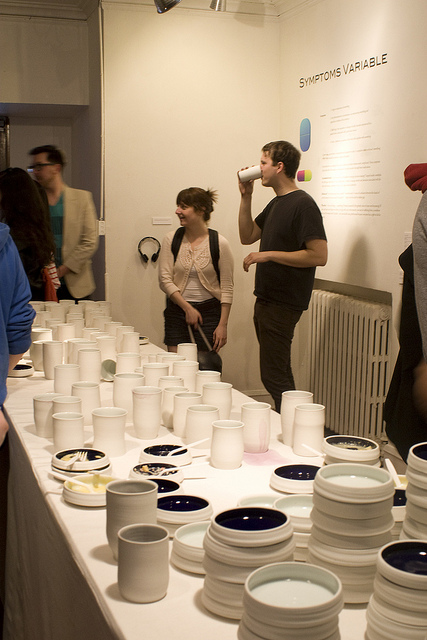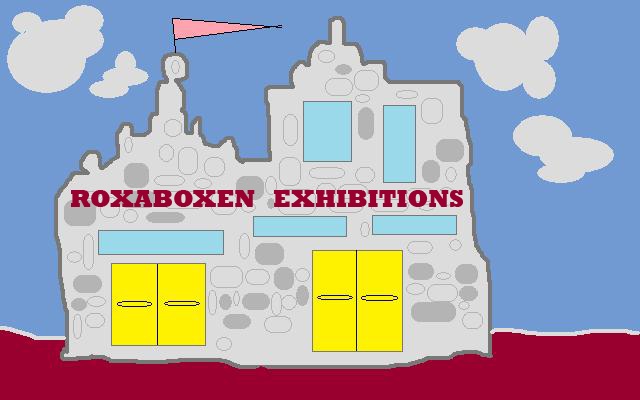Thea Liberty Nichols: I have to bashfully admit that, despite it being just a bike ride away, I’ve never visited Roxaboxen Exhibitions before. But, for a while now I’ve been keeping tabs on all of the various events you have going on, such as the openings, performances, classes and studio space you have for working artists. Can you tell us more about all the stuff you house under one roof, and let us know what motivated you all to open your doors, add a new voice to Chicago’s exhibition space topography, and cultivate the community that orbits around you?
Liz McCarthy: I wanted to leave Asheville, North Carolina, where I had been living and going to art school. I had been selling my work and doing well there but it was a small community and I wasn’t satisfied with what I was making and wanted to expand my practice and feel more challenged. I grew up outside of Chicago and went to North Carolina a lot to visit my Dad— both these places have resonated as home, but I decided to return to Chicago to be close to my Mother again. Also the rent prices were a third of the prices of other places I was looking at moving (New York and Philly). I had read a lot of articles about Pilsen and artists who rented storefronts for art spaces in college, and I had gone to Pilsen as a teen to wander. I decided that I wanted to have a storefront arts space in Pilsen.
TLN: I see from the list of ten names involved in operating your space that there’s a healthy team of folks supporting your organizational efforts. Are all of them artists? And do all these voices and hands embed themselves into the character of Roxaboxen Exhibitions as a collective, or are things more parsed, delegated and individuated?
LM: Roxaboxen was extremely disorganized in the beginning, getting into it I had this idea that we would all have jobs and function more like a collective or business. After about 6 months where I had been doing most, if not all, of the administrative work, I realized that I had developed this major role as director. I began taking more ownership of the space, and was more committed to trying to really curate and schedule in a more intentional way. The others sort of let this happen and an unspoken agreement developed wherein I did what I wanted and others could schedule stuff they were interested in whenever there was free time. So Roxaboxen has evolved over the past few years out of this original situation. I am back and forth about making money on the space, sometimes I feel like I should be, sometimes I don’t care.
Today Roxaboxen consists of four residents, soon to be five, but the only original residents as of next month will be Lindsey Zimmer and me. We live in rooms we built into the building and the rest is studio space. We decided to rent out more of the building as studio space because we had been having these heinous rock shows to make money for our utilities, and renting the space meant we didn’t have to do that any more. The shows were full of drunks that loved to disrespect the space, and resulted in a lot of unnecessary cleaning and damage control. Also, I was interested in making the building a productive space rather then a party zone. I work really well in a community of artists and most of the reason I wanted to start the space was to expand and develop the art community around me. Having more studios and artists working was a way of bringing that making energy into the space. I had originally thought that the people living in the space would fill that niche, but after three months Miranda and I were the only residents actually making anything— live-in residents do more living then making of art. So now we have studios for artist not living in the space and a stronger community and dialogue has really developed within the intimate collective that identifies themselves as Roxaboxen. The collective itself has developed into what I like to describe as “family vibes.”I am really happy with the people that are now involved with the space— community community community!
TLN: I’ve worked with arts collectives in the past that have filled very specific niches and had extremely well defined and rigid parameters within which they function. I’ve also collaborated with other organizations that are very project-based, responsive and constantly honing their strengths and defining their own successes. Where would you say Roxaboxen Exhibitions falls on this spectrum? Have things changed from past to present, or do you sense changes ahead for the future?
LM: As far as the future— it is blurry. I am signing a new lease for the next year but have grand ideas of leaving the country, going to grad school, or just giving up on communal living. But, for the next year we are going to continue to be great with no expectations for the future! Because Roxaboxen has developed such a name for itself I feel like it is hard to just end, and it’s a really scary idea for me. I really like doing this art space thing, and I feel like even if I end this space I will continue to run some sort of art space in another capacity again, maybe in Chicago, maybe somewhere else. The gallery is booked till May….
Another reason for me to leave the space is also because it significantly takes away from my personal art practice. Part of my reason for starting Roxaboxen was to expand that, but I find I put so much energy into the space I push aside my own work. I had to take the summer off programming to have time for myself.
And community community community! I repeat this to transition into my statements about my curatorial strategy. Though the collective has doubled from the original group I still do most, if not all, the administrative work, and the others act as helping hands when needed. I took this on in many ways and enjoy my position. I am the best suited as ambassador of Roxaboxen, and I am the most driven to expand the gallery/ community programming aspect. I work off two precepts in deciding what happens at Roxaboxen: 1) things that amaze me/ art I love; and 2) artists and events that I feel close to or want to be close to. Most of the time I show work that falls somewhere in between— amazing art by people I love. Because the entire space is such a labor of love, I want to just have a lot of fun, learn from my experiences through the space, and meet new interesting people, thus that is how I decide what happens. This is how planning typically occurs; a friend asks to use the space, someone pitches an idea to me that sparks my interest, or I invite someone that I am really interested in to do something. To expand on how this plays itself out— Roxaboxen’s fame and fortune (HA!) is purely a snowballing of friends and word of mouth.
While the programming is wildly based on chance in this way, I am interested in making the shows here represent diverse communities in attempts that these communities overlap and make connections with one another and expand the Chicago art dialogue. I have noticed that the art scene here can become cliquey and segregated, i.e. Columbia College students vs. SAIC (School of the Art Institute of Chicago) students, ACRE (Artists’ Cooperative Residency and Exhibitions) resident artists vs. Harold Arts resident artists, Latino artists vs. White artists. I want to bridge those gaps and include as many different groups in our space as possible.
I have been criticized a lot by more legitimate artists and communities for my curatorial methods; a resident artist told me that I lacked “vision” and focus in the way I choose shows, but I feel like I wouldn’t want to have too clear of an idea. Part of the beauty of Roxaboxen exhibitions is we have so much freedom and little self awareness, so we can show more outsider work like no name artists as well as more “legitimate” artists. While I understand the necessity to glorify fine art (I am an artist who wishes to make money too) I am all for new, captivating ideas in whatever form they take.
Liz McCarthy is a based out of Chicago’s Pilsen neighborhood. She moved to Chicago from Asheville, NC, a little over a year ago to start an artist-run gallery/studio/co-op called Roxaboxen Exhibitions, and continues to curate and manage the space. She has had the opportunity to participate in artist residency programs such as the Atlantic Center for the Arts with master artist Rineke Dijkstra and ACRE Residency in Wisconsin. She shows her work all over the city, and contributes much of her time to supporting Chicago’s many artist communities.
All images courtesy of Roxaboxen Exhibitions.

